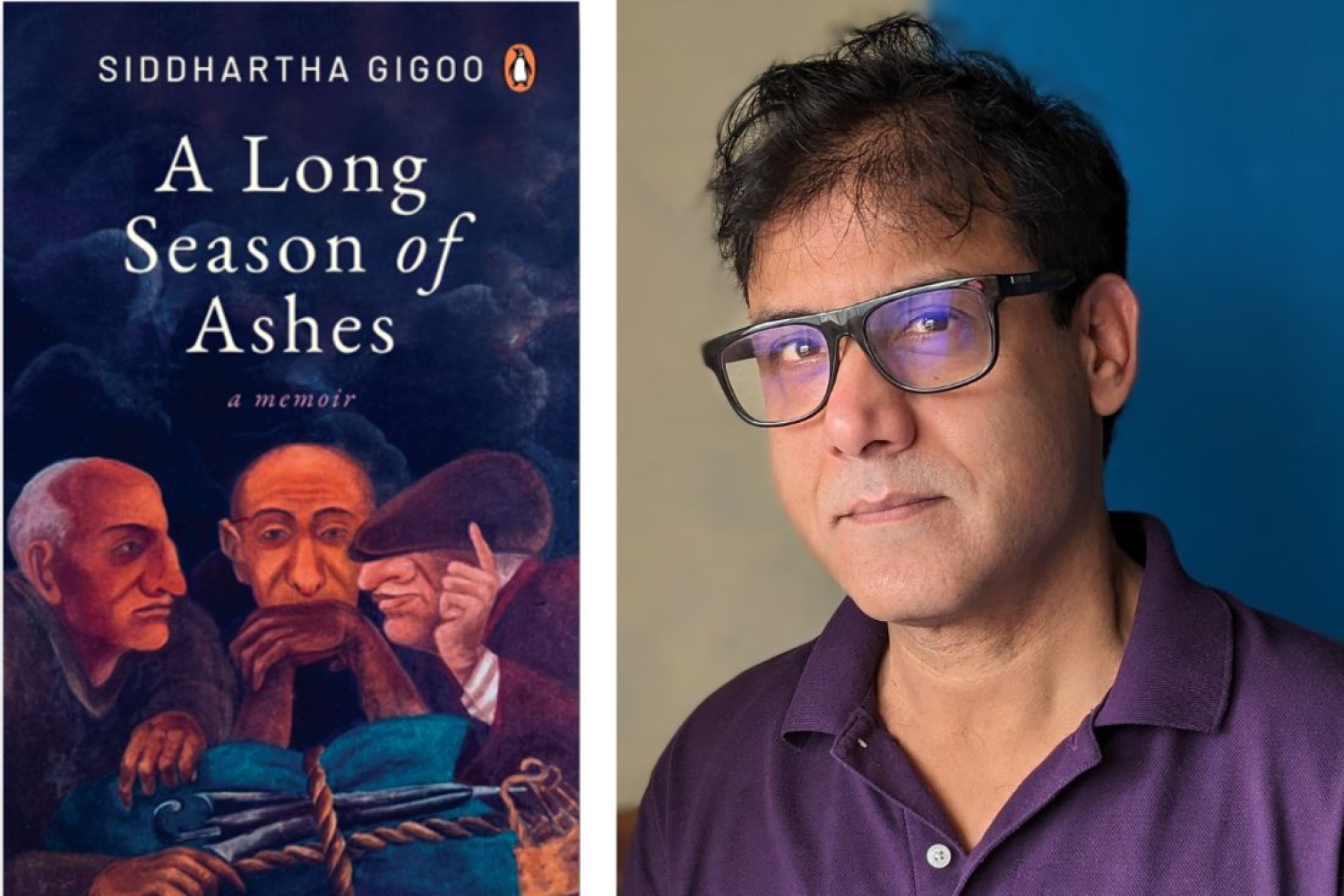

Siddhartha Gigoo’s teenage years were marred by displacement and terror in Kashmir. His upcoming memoir, A Long Season of Ashes, is slated for release in January 2024—marking 34 years of the Kashmiri Pandits Exodus. Following the exodus in 1990, Gigoo and his family endured over two decades of hardship in a camp that he expresses in his writing. He dedicated his life to narrating the stories of Kashmiri Pandits, who witnessed years of affliction, and still ponder over the concept of home. Gigoo emphasises “Amidst the horror, the misery, the desperation, and the deprivation, I saw things which no human should ever see. An experience that transformed me, forever!” In this conversation, he shares his camp life experiences in Delhi, sheds light on why he chose to pen a memoir now and delves into the collective trauma while expressing hope for a better future.
PRESENT AFFLICTED BY THE PAST
The memoir has been and continues to be a work-in-progress mission for more than three decades. It should be a lifelong mission, given what we have gone through as a family and a community. My father introduced me to journal writing when I was growing up in Kashmir in the 80s. We were left with no option but to flee to save our lives. The departure was enforced owing to the turmoil, the persecution we faced and our selective targeting in 1989-1990. We were given expulsion orders by the major- ity community in Kashmir. We would have been killed had we stayed on. We had no idea where to go and where to seek shelter.
We must remember that the forced exodus of Kashmiri Pandits was the biggest displacement India witnessed after the partition. In exile, our lives changed. The abject and traumatic human condition we found ourselves in the camps led to a multi-dimensional impact at various levels—personal, societal, emotional, physical, psychological, sociological, economic, civilizational. Understanding this multi-dimensional impact on our lives, as individuals and as a minority community is a matter of everyday rumination and examination.
We lived spilt lives. Our hearts and minds were in Kashmir in our homes, but our bodies were in the camp, wilting in the sun. People dwindled. We saw only deprivation, disease and deaths. Thousands perished without leaving a trace. All deaths were unnatural. In the camp, I saw several elderly people lose their memory; their lives transformed. My grandfather, too, lost his memory and went through unspeakable ordeal for years before passing away, pining for one last glimpse of his home in Kashmir. My grandmother, too, died after several unsuccessful attempts at going to her old home where she had dreamt of living and dying and seeing her grandchildren grow. Hope kept us alive.
After miraculously surviving the camp life, we are now faced with a sense of erosion of cultural identity. A way of life now stands erased. A centuries-old unique culture, gone.
WRITING A MEMOIR NOW
I hope people will get to know certain things which only those of us know who were compelled to live in tents in ‘migrant’ camps for over two decades. Even the government doesn’t know. Imagine the human condition during those 20 years—the darkest time of our lives. ‘There are 3,50,000 survivors of the Holocaust alive today and I implore all the educators to not allow the Holocaust to remain a footnote in history,’ said Steven Spielberg in his 1993 Oscar acceptance speech for his movie Schindler’s List. ‘These 3,50,000 experts just want to be useful for the remainder of their lives. Please teach this in school and please listen to the words and the echoes and the ghosts . . .’ he adds. Kashmiri Pandits should not relegated to a mere footnote when it comes to the matter of Kashmir and its future. Without Kashmiri Pandits, there is no Kashmir. Kashmir does not exist without its original inhabitants—the Kashmiri Pandits.
The book attempts to describes those conditions and the impact on the lives of the camp dwellers. And the impact (then and now) on my family. Twenty years of trauma at different levels is depicted in the memoir in an attempt at painting the true picture and presenting a 360 degree view. It is an exploration into my own past and present—a strange collision of memory, space, time, reality and dream, as I narrate the events that took place in our lives when we were in the camp.
This is an exclusive excerpt from our January EZ. To read the entire article and more such pieces, follow the link here.
Words Paridhi Badgotri
Date 27.01.2024